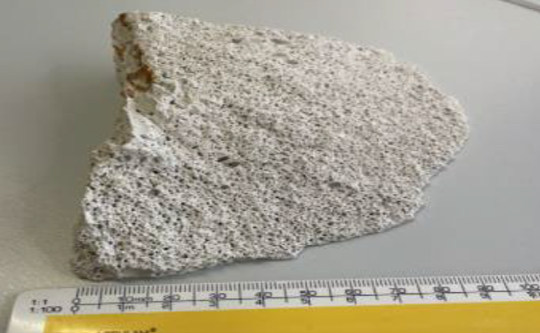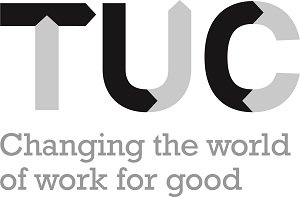Everything you need to know about Raac
What is Raac, why is it dangerous, where is it found, and what should be done about it?
It’s back to school this week -- but not for some. Hundreds of schools have been advised to close all or part of their buildings owing to the safety risk posed by one building material, known as Raac. This has left school and college leaders in a stressful situation, forced to manage circumstances on ground with a lack of support or direction from central government, not to mention no extra funds. Thousands of children, workers and parents are affected. So what is the risk, and what needs to change?

Example of a fragment of Raac, via Department for Education
What is Raac?
Reinforced Autoclaved Aerated Concrete (RACC) is a construction material. It is a lightweight precast concrete material that is made from sand, cement, lime, and aluminium powder.
The manufacturing process of Raac involves mixing raw materials, pouring the mixture into moulds, and then subjecting it to a high-pressure autoclaving process which results in the formation of air bubbles.
Raac has been a widely used building material because it is cheap, lightweight and provides good thermal insulation. However, there are several structural deficiencies of Raac, and the Building Research Establishment have previously raised concerns about cracking, excessive displacements and durability. Trade unions, especially in education, have been sounding the alarm on this for some time.
Why is it dangerous?
In 2019, a Raac panel roof in a school collapsed: suddenly and with no apparent warning. Since then, numerous other Raac collapses have been reported where the material otherwise appeared to be in good condition.
If Raac is used in structural components without proper engineering and design considerations, it can lead to structural instability, potentially resulting in building failures or collapses. This could result in serious or even fatal injury.
Raac can also be susceptible to moisture-related problems, such as mould growth and deterioration, if not properly waterproofed or adequately maintained. As with any construction material, improper installation can result in structural weaknesses, air leaks, or other safety issues that may not be immediately apparent.
Any potential collapse or deterioration of Raac could also lead to disturbance to dangerous asbestos-containing materials. Most schools in Britain contain asbestos, and when fibres of the material are disturbed and released into the air, they can be breathed in, risking serious illness later in life.
Where structural concerns are identified, this is likely to necessitate its removal and replacement with a more suitable material, and in the meantime, the area taken out of use.
Where is it found?
Reinforced Autoclaved Aerated Concrete (RAAC) was commonly used in construction between the 1950s and mid-1990s and many buildings completed in this period contain it. This includes a high number of schools, as well as hospitals, theatres and other public buildings. Raac is commonly found within certain building features:
- Exterior Walls in residential, commercial, and industrial buildings.
- Interior Walls: to create separate rooms or spaces within a building.
- Roof Panels: used in roofing for insulation.
- Floor Systems: especially for upper floors.
- Facade Cladding: cladding material for building facades.
- Firewalls: to help contain fires and prevent them from spreading to adjacent areas.
- Soundproofing Walls: soundproofing walls in buildings such as theatres, recording studios, and residential units.
- Retaining Walls: Raac can be used in retaining walls, particularly in landscaping and civil engineering projects.
- Pipes and Ducts: in the construction of pipes and ducts .
- Partition Panels: In office spaces and commercial buildings, used to create separate work areas.
- Prefab Construction: used in prefabricated construction components.
As far as schools are concerned, the Department for Education previously asked school leaders to respond to a survey to identify which buildings had Raac. More than a thousand schools have not yet responded, so we do not yet have an accurate picture of the scale of the problem, and the DfE has failed to disclose information to unions, even refusing to respond to freedom of information requests.
What should be done about it?
We need immediate assurance of the safety of people using buildings with Raac, including our school communities. We also need an accurate picture of where Raac is used, and the state of its stability.
If a trade union rep suspects a building to contain Raac, they should contact the employer to find out whether this is confirmed, and if any assessment has been made of its structural strength, which they have the right to review.
- Where issues are identified, they need mitigating as soon as possible. We need the government to step in and provide assistance where a Raac feature in a public building is identified and deemed as a risk to persons.
- It is unacceptable for school leaders and their teams to be tasked with assessing the immediate risk of harm if they suspect or discover the presence of Reinforced Autoclaved Aerated Concrete (Raac) on their premises. Their expertise does not lie in making such assessments. The Department for Education must also ensure that checks by structural engineers are carried out – and paid for centrally - in every single school where the use of RAAC is identified.
- Where structural work is required, adequate funding for both remedial work and temporary measures must be provided by the government – not, for example, from school budgets.
In August 2023, the Department for Education issued updated guidance on Raac and the expectations on duty holders. It provides advice on recognising Raac in buildings and helps to explain the risks and the process of appointing a surveyor or engineer. The HSE also updated their guidance on Raac in August 2023.
Currently, attention is on school buildings. However, Raac is found in other public buildings such as hospitals and local authority buildings, and similar action must be taken in these workplaces, too.
Stay Updated
Want to hear about our latest news and blogs?
Sign up now to get it straight to your inbox
